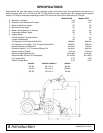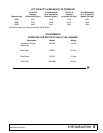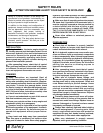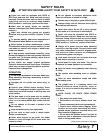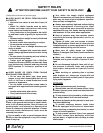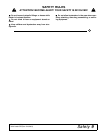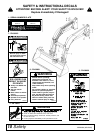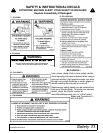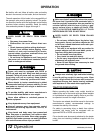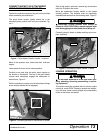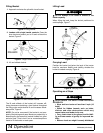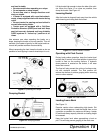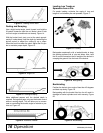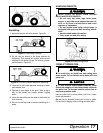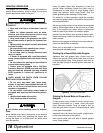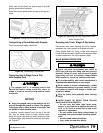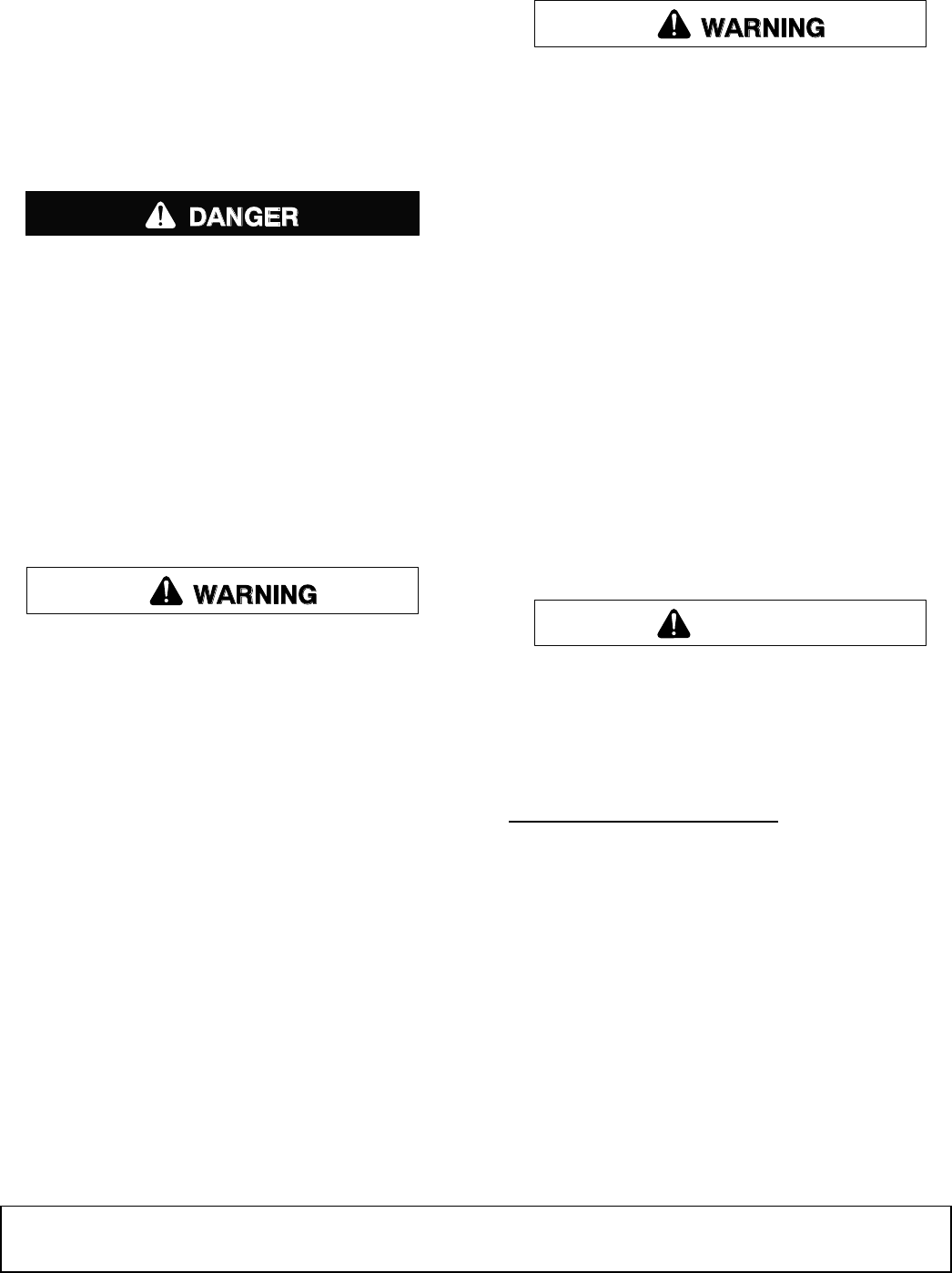
12 Operation
MAN0556 (9/21/2007)
OPERATION
Be familiar with and follow all safety rules and safety
decals in the manual, on the loader, and on the tractor.
The safe operation of this loader is the responsibility of
the operator, who must be properly trained. The opera-
tor should be familiar with the equipment and all safety
practices before starting operation. Read the safety
rules and safety decals on pages 6 through 11.
AVOID INJURY OR DEATH FROM POWER
LINES:
• Stay away from power lines.
• Electrocution can occur without direct con-
tact.
• Check clearances before raising attachment.
• Consult local utilities before digging. Know
location of and avoid contacting all under-
ground cables, pipelines, overhead wires, and
other hazards in digging area.
• Do not leave the operator's seat if any part of
the power unit or attachment contacts electric
lines or underground cables.
Power unit must be equipped with ROPS or
ROPS cab and seat belt. Keep seat belt securely
fastened. Falling off power unit can result in death
from being run over or crushed. Keep foldable
ROPS system in “locked up” position at all times.
Move wheels to tractor manufacturer's widest
recommended setting to increase stability. Do not
use loader on tractors with single or double cen-
tered front wheels.
To provide stability, add tractor manufacturer's
recommended wheel ballast or rear weight.
Never allow children or untrained persons to
operate equipment.
Keep bystanders away from equipment.
Keep all persons away from operator control
area while performing adjustments, service, or
maintenance.
Keep hands and body away from pressurized
lines. Use paper or cardboard, not hands or other
body parts to check for leaks. Wear safety goggles.
Hydraulic fluid under pressure can easily penetrate
skin and will cause serious injury or death.
Make sure that all operating and service person-
nel know that if hydraulic fluid penetrates skin, it
must be surgically removed as soon as possible by
a doctor familiar with this form of injury or gan-
grene, serious injury, or death will result. CON-
TACT A PHYSICIAN IMMEDIATELY IF FLUID
ENTERS SKIN OR EYES. DO NOT DELAY.
AVOID INJURY OR DEATH FROM FALLING
OBJECTS:
• Do not carry shiftable items. Hay bales, logs,
fence posts, stones, and other objects can roll
or fall from a raised attachment and crush oper-
ator or bystanders.
• This unit is not equipped with any method to
prevent objects such as round bales, posts, or
logs from rolling back onto operator.
• Do not handle round hay bales.
• Carry loads low and drive slowly.
• Do not carry large objects that can fall out of
attachment into operator zone.
• Never lift load higher than necessary to clear
the ground when moving.
Always wear relatively tight and belted clothing
to avoid getting caught in moving parts. Wear
sturdy, rough-soled work shoes and protective
equipment for eyes, hair, hands, hearing, and head;
and respirator or filter mask where appropriate.
TRACTOR PREPARATION
Before operating the loader, extra weight should be
added to the rear of the tractor with rear wheel weights
or liquid ballast for optimum stability. Refer to your trac-
tor operator's manual for weight information.
The tractor rear wheels should be moved to the tractor
manufacturer's widest recommended settings to
increase the stability of the tractor.
For safety in preventing injury or death from rollover
accidents, the tractor must be equipped with an
approved ROPS or ROPS cab and seat belt.
Pin-on bucket must be securely attached to the loader
using pins and retaining hardware supplied with the
bucket.
CAUTION



